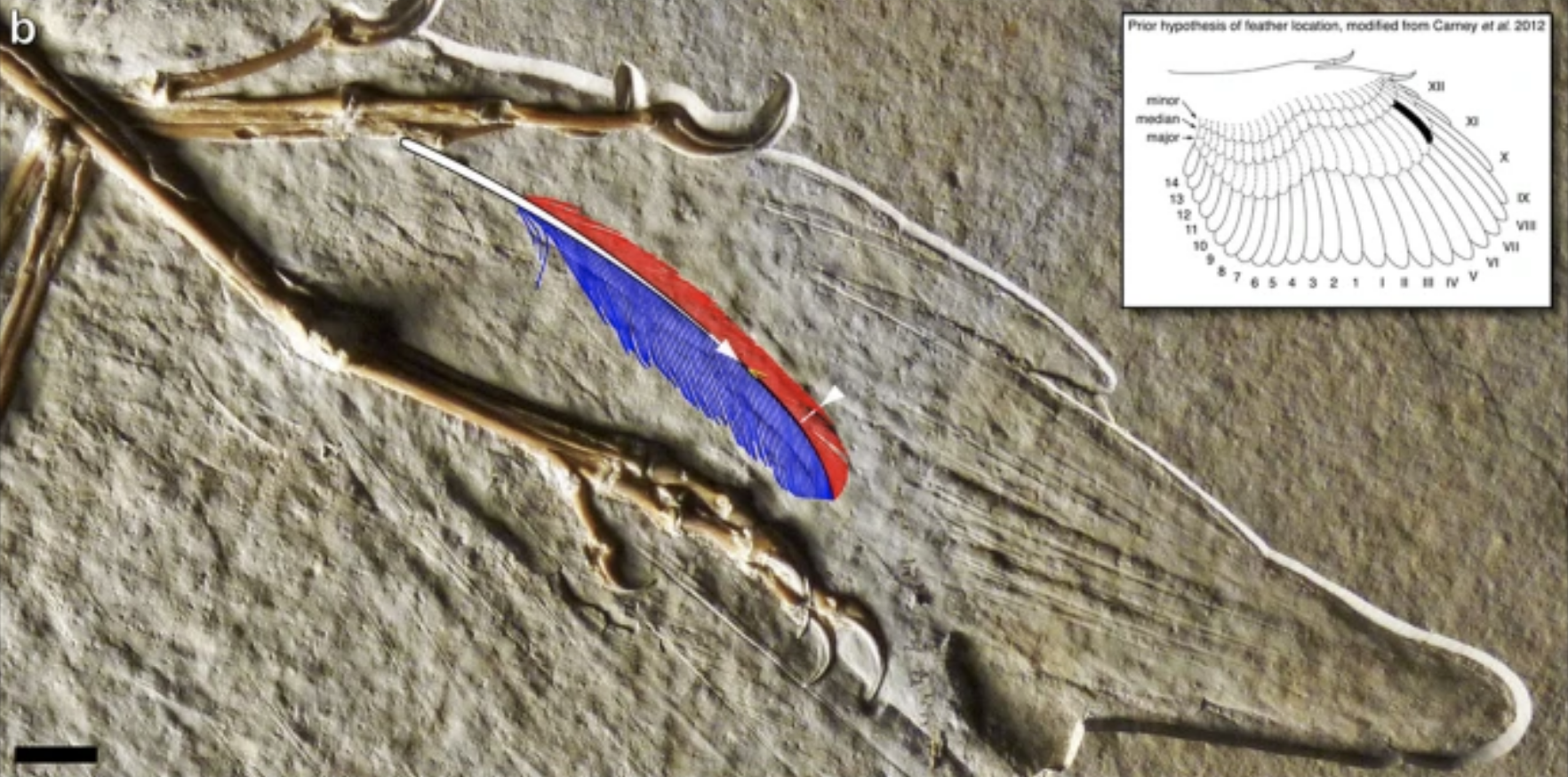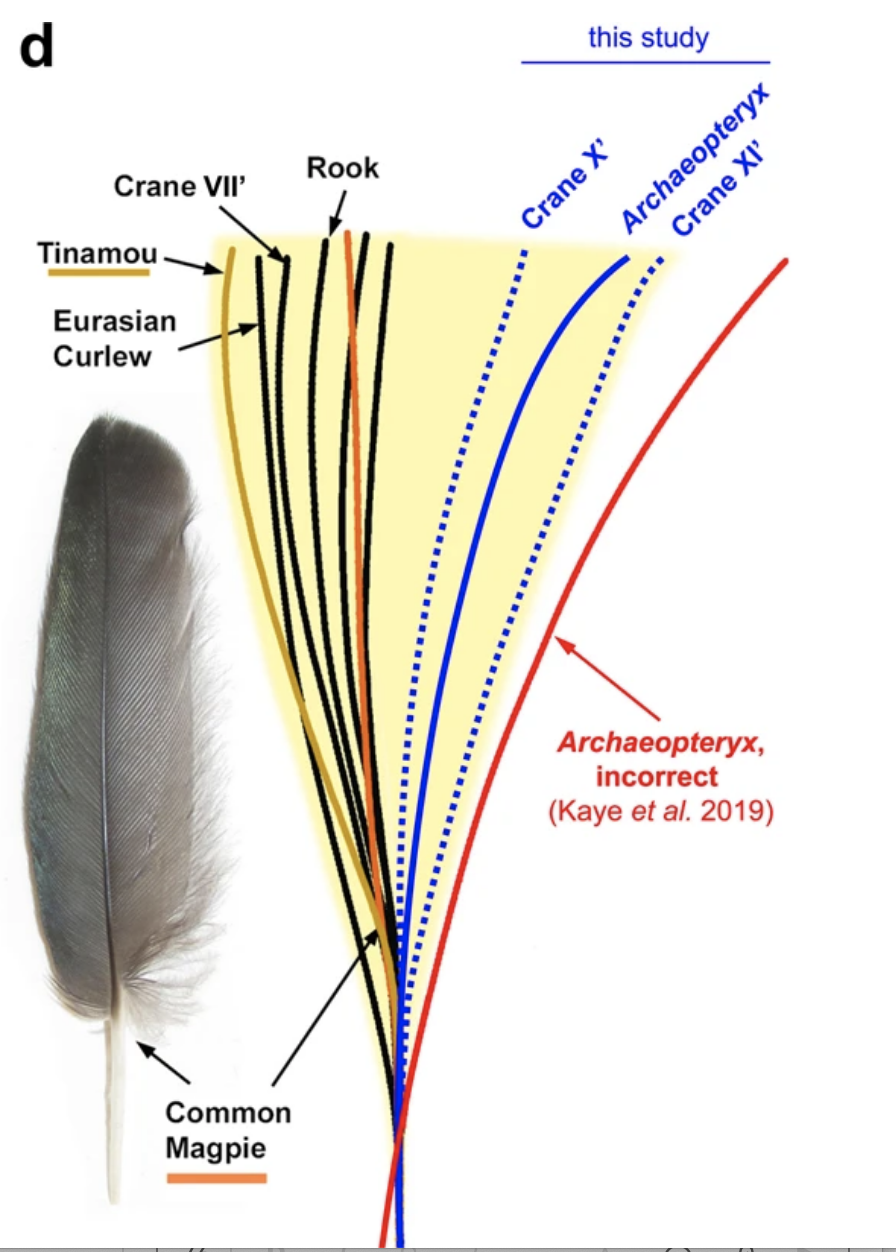The earliest fossil of a feather ever found has been stuck to the ground for roughly 150 million years. Ever since it was discovered, over a century and a half ago, pretty much everything about it has remained unsettled.
Scientists have been trying to pin the feather on a Late Jurassic dinosaur for years now, and the debate hit its newest wave of turbulence in 2019, when a team of researchers argued the fossil belonged not to the Archaeopteryx lithographica - famous for being 'the first bird' - but to a different unknown species altogether.
Other experts aren't so sure. New research claims the isolated feather is indeed shaped like the primary feathers of Archaeopteryx. What's more, the feather was found at the same fossil site as four Archaeopteryx skeletons.
The location alone is a better explanation than an irrefutable new species, the new paper argues; after all, as the saying goes, birds of a feather flock together.
"[The 2019] study's alternative taxonomic hypothesis is a hypothetical undescribed dinosaur, a position that circumvents the burden of proof and cannot be falsified," the researchers explain.
Matching up the feather with multiple Archaeopteryx specimens, some of which come from the same fossil site, the new paper argues the ancient feather could, in fact, fit on an Archaeopteryx wing.
In both size and shape, they say, its range resembles the upper major primary covert feathers (outer feathers that help smooth the airflow over the wings and tail) of other Archaeopteryx, which have been found with feather imprints elsewhere.

Altmühl specimen of Archaeopteryx, showing the dorsal surface of the right wing, overlaid with the outline of the fossilised feather. (Carney et al., Nature, 2020)
"There's been debate for the past 159 years as to whether or not this feather belongs to the same species as the Archaeopteryx skeletons, as well as where on the body it came from and its original colour," says Ryan Carney from the University of South Florida.
"Through scientific detective work that combined new techniques with old fossils and literature, we were able to finally solve these centuries-old mysteries."
Previous research predicted the feather was probably black in colour. A reanalysis on the pattern of pigment bodies captured by the fossil reinforced these interpretations, also observing it was unlikely to be a very iridescent or glossy hue.
One of the most contentious parts of this fossil is the loss of its quill, or centreline, which has dissolved away since its discovery. In the study published last year, researchers argued the curvature of the feather was far too severe for an Archaeopteryx.
The new paper argues the curve of feathers are highly variable across species, especially in the upper wing. Besides, the authors add, the c-curve the last team came up with is incorrect.
In the figure below, the new paper overlays this c-shape with a 'corrected' centreline, which the authors reconstructed from the fossil by taking a laser-stimulated fluorescence image.
"This new centreline is substantially different from that originally presented," the authors write.
"Correcting for this error ... completely eliminates the purported large departure of the fossil feather centreline, which now falls within the range of the selected modern species."

Modified figure including a more representative range of modern centreline morphologies. (Carney et al., Nature, 2020)
Of course, this is hardly where the debate will end. While most new research on this feather claims to have settled the matter, over the course of 150 years, we keep learning more and more about Archaeopteryx fossils, including the various shapes, colours, and functions of their feathers.
In spite of this new rebuttal, Michael Pittman, one of the authors of the 2019 study, is standing firmly by his findings.
The vertebrate palaeontologist told The New York Times that while this fossil feather might fit somewhere on Archaeopteryx, "[w]e can't rule out that another bird or other species didn't drop the feather".
The isolated nature of this feather means we can never know for certain who it belonged to, but researchers from USF are convinced that the Archaeopteryx is the "most empirical and parsimonious" explanation.
According to the NYT, Carney is so convinced, he got a new tattoo labelling the feather as Archaeopteryx.
The study was published in Scientific Reports.
#Nature | https://sciencespies.com/nature/oldest-fossil-feather-ever-found-came-from-the-archaeopteryx-dinosaur-study-confirms/
No comments:
Post a Comment